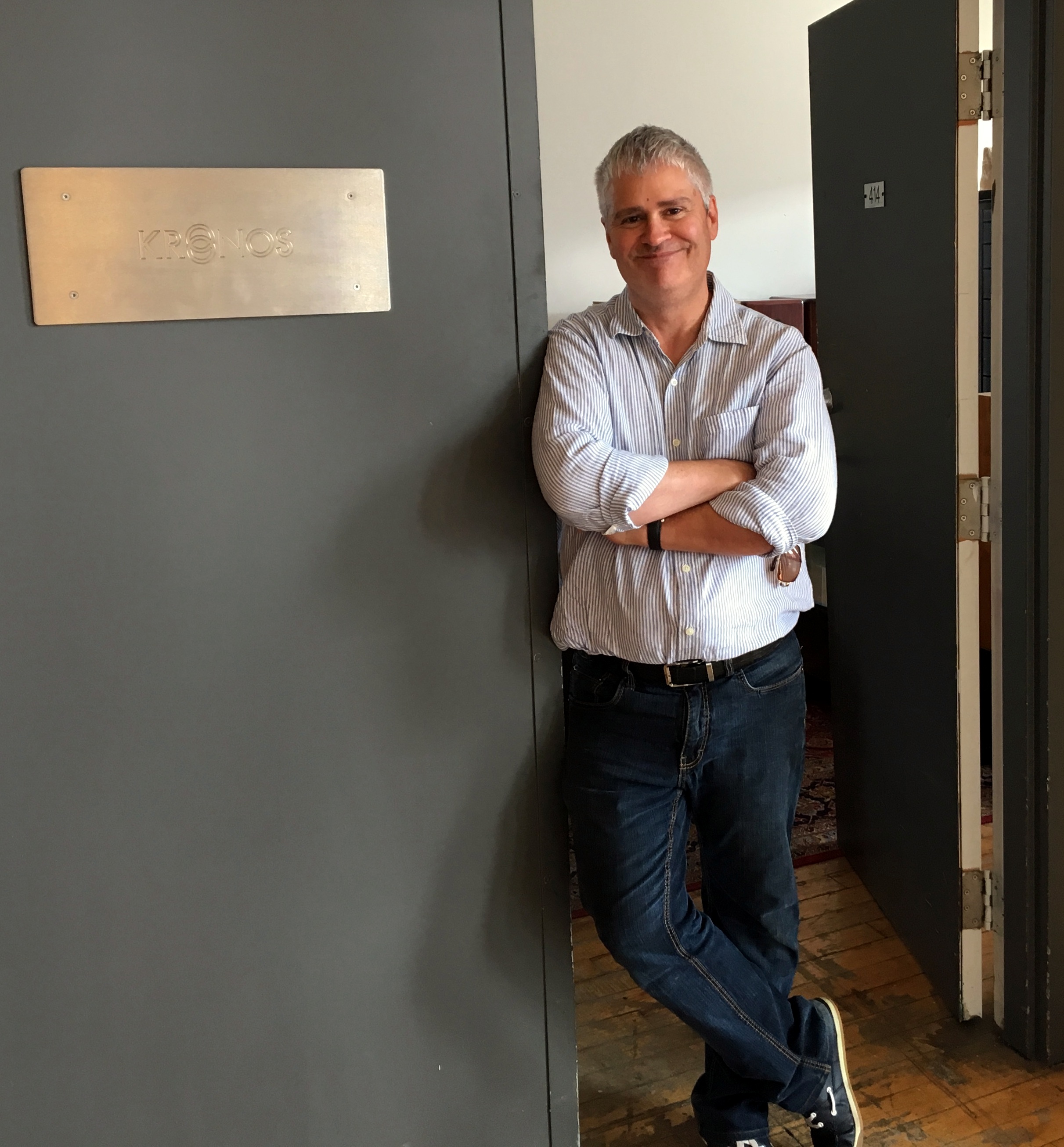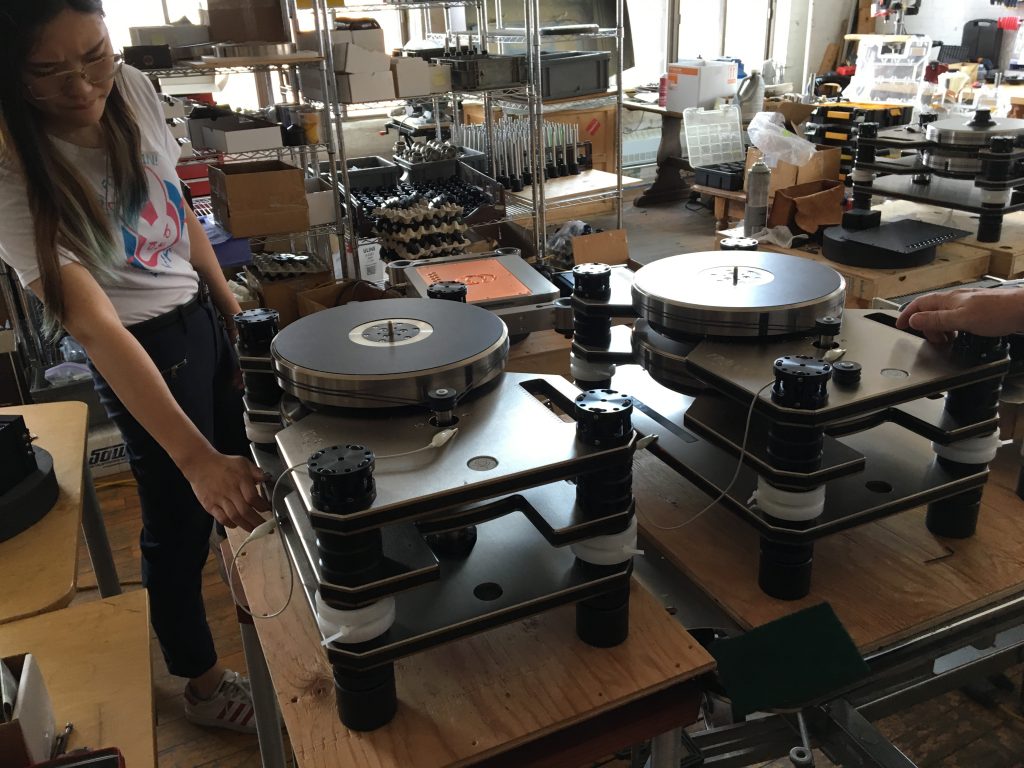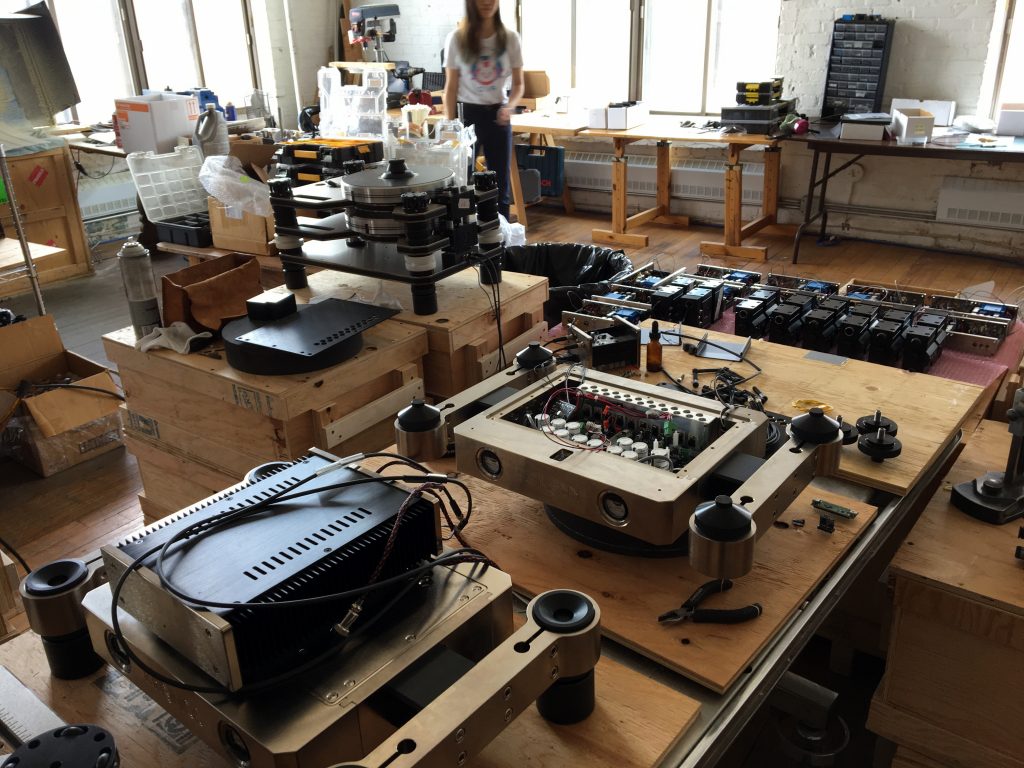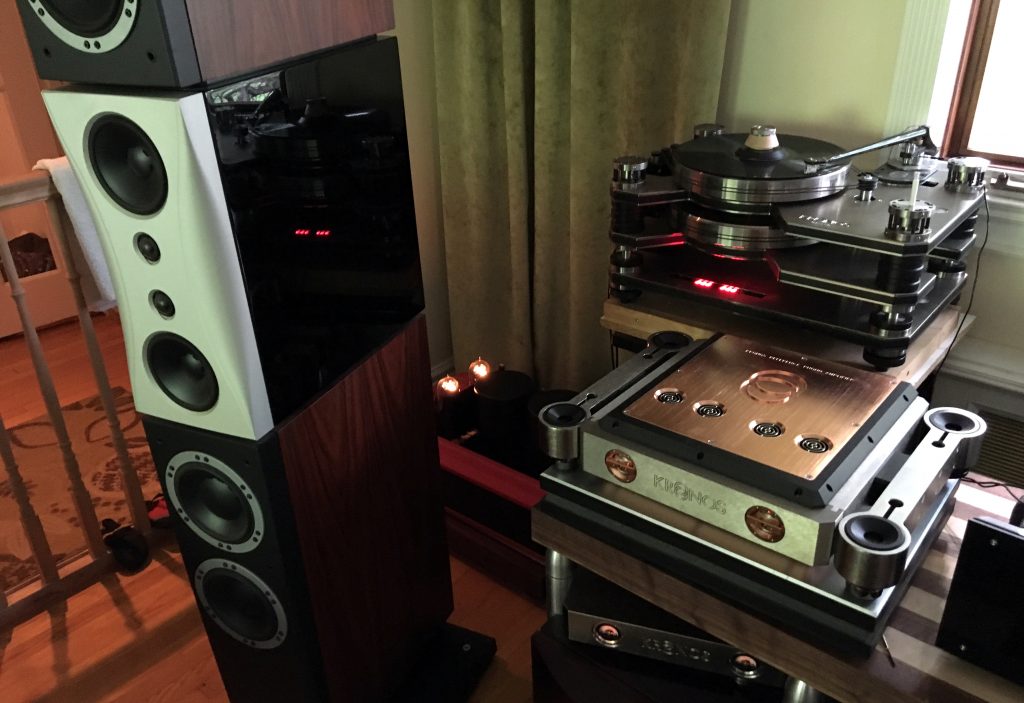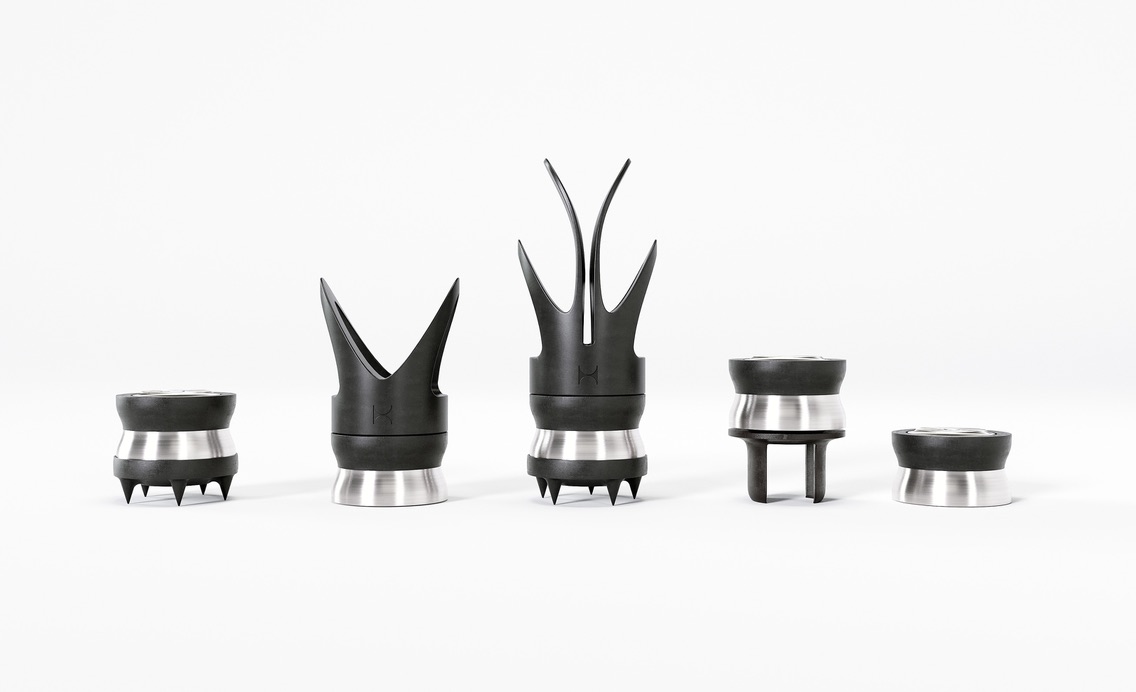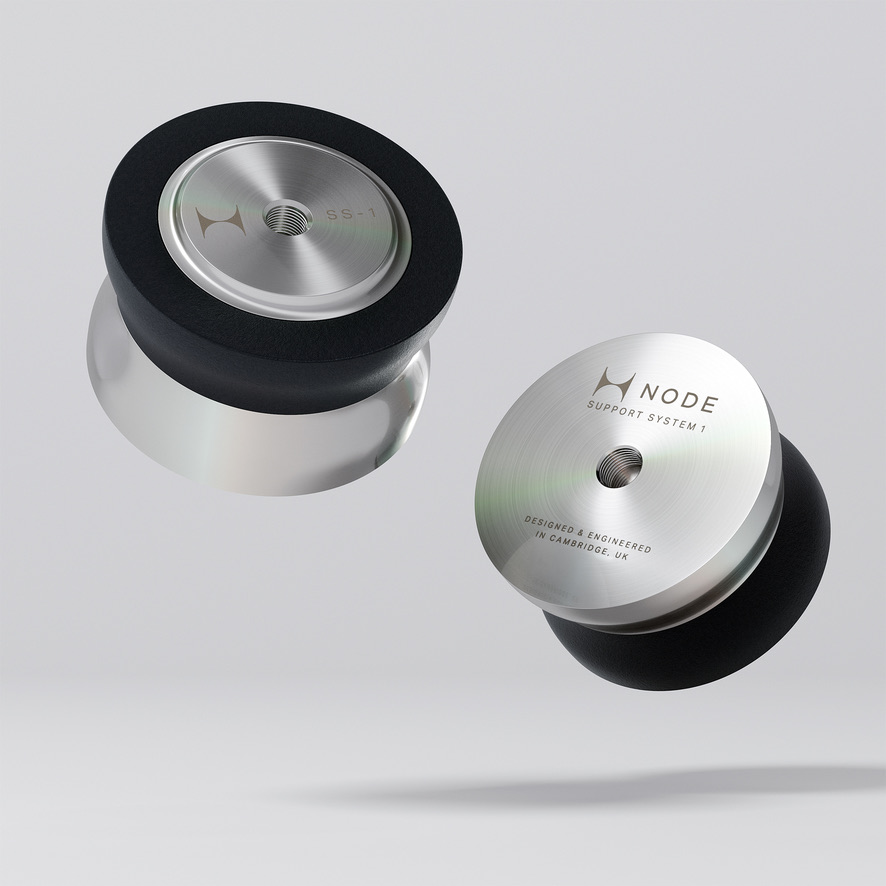Ah, Montreal
We finally made it! An excursion to Kronos Audio in Montreal had been planned last year, but, due to one thing or another, it never happened. Lynn and I were again vacationing nearby, attending the Ottawa Chamberfest (13 years and counting!). One full day is always given to "New Music Now" programming. This is something you need only attend once. We needed to skip town, and so I proposed another attempt at the outing.
As the date approached, however, events began to conspire against us a second time: loose, unconfirmed travel plans; a very inconvenient "no service" message on my cellphone; and the third attendee having to cancel the day before due to an unexpected business commitment. Spontaneity, we would soon learn, was not unusual given the casual style of Louis Desjardins, the designer and proprietor behind the turntable with two platters, and no real cause for concern.
A Portrait of Louis and Lynn
So on a sunny Monday in August, after a two-hour train ride we pulled into Montreal's Central Station and were met by Louis and his young machinist Tracy. We piled in for a short drive to the Kronos Audio factory in a downtown industrial area.
I confess to a little anxiety about the conversation flagging, but our affable host was never at a loss for words. Louis is an idea man with freely expressed, deeply felt opinions on everything from audio to philosophy to economics.
On the way we stopped for lunch at a fast food falafel joint. When Lynn and I took several minutes to figure out what to order, it prompted Louis to observe: "Already I can see that you and I are different. You like complexity—I go for simplicity." Fair enough. We sat down and plunged right into a discussion of the effects of back EMF on power cords. That's right, just some light lunch banter. "Backwards electromotive force, also known as counter electromotive force, is the electromotive force or ‘voltage' that opposes the change in current which induced it. CEMF is the EMF caused by magnetic induction." [Source: Wikipedia]
What this means, Louis explained, is that the component gets its juice and then kicks back a minuscule CEMF along the power cord to your AC conditioner or power distributor, where it adversely interacts with the voltage going to other components.
I had heard about CEMF in reference to speaker cables. That made sense, as they carry a signal and you don't want anything messing with the signal. I never considered how it might apply to power cords.
Louis' prescription for controlling the amplitude of the back wave, in brief, is to separate the AC lines. Plug the turntable into one outlet and the digital into another. (Better yet, leave the digital off—or sell it. Digital always degrades analog, in Louis' opinion. He does not own a digital front-end. ) Put the amplifier on its own circuit; use two for monoblocks.
A little later, Louis dropped another insight: the importance of tuning your component's chassis. By adjusting the torque of the chassis screws you can change the cabinet's resonance point. Try this: tighten or loosen the rear screws a quarter turn. Listen. Do it again. Continue in this fashion to determine the best setting. Then move on to the front screws. Again, this was something I never considered. I always thought it best to tighten the screws all the way to minimize resonances.
You can experiment with each of your components—except the ones from Kronos. Louis has already tuned his products. They are shipped properly set and should never be touched! If a component needs servicing, the tech (or dealer) will finish the repair by resetting the screws to the correct torque. This insures that every Kronos product, from the turntable power supply to the Phono Preamp and its power supply, will sound as it was intended to sound in the customer's home. The attention to tuning comes out of Louis' frustration on hearing something unlike what he expects when visiting customers and is the basis of what he calls the Kronos Analog Solution: to guarantee his products sound consistent in every installation.
The Factory
The Kronos Audio factory is a sprawling loft space. Components are only assembled here; the parts are fabricated off site. Many vintage, and some current, speakers were visible in every direction—Louis has quite a collection. There were also a couple of motorcycles scattered about, evidence of another collection, perhaps?
Spinning LPs on his home system
Louis's Listening Room
Next we drove to his suburban home to check out his personal system, comprised of recent Dynaudio model speakers, Kronos Pro table and Kronos phono stage, an unbranded pre-amp, and Absolare 845 Single Ended Triode monoblocks. Kubala-Sosna wiring was used throughtout. "Only tubes for me; I'm not a solid-state guy." The setup was in his living room which, by his own admission, "is a horrible room, because we live here." Still, it serves his purposes: "I hear what I need to hear—no two recordings are alike. I hate to walk into an acoustically treated room and there's no life."
He put on a couple of audiophile re-issues, beginning with JS Bach Sonatas and Partitas featuring Kyung-Wha Chung, solo violin. This was a bold opener to play on a cold system, but string tone was luscious, very full and developed. It was obvious the recording was made in a reverberant hall. Resolution was outstanding: you could hear the musician moving around the mic. Street sounds from outside the church venue were audible in the pauses between movements.
I wrestled with Louis' repeated instruction, "Don't listen to the system. You are here to listen to the source, the turntable." Can one ever completely separate the two?
Another reissue, Prokofiev's Love For Three Oranges Suite with Ormandy and the Philadelphia Orchestra, recreated a huge, immersive stage. Instruments popped out with highly saturated color and very lively dynamics. As Louis said, "There was a correctness to how the orchestra was presented." This system makes him happy and he feels no need to indulge in component rotation. It comprises a stable reference point for gauging his product updates.
Louis summed up our listening session with this observation, "Records are like photographs of the time of the performance." What a great analogy. Both mediums preserve a fleeting moment in time.
the Basilique Notre-Dame
On Tuesday morning we had a few hours for sightseeing, including a tour of the Basilique Notre-Dame de Montreal, before catching the 12:04 pm train back to Ottawa. That night the Pražák Quartet was performing in a century-old church with marvelous acoustics. We had seats in the fifth row center. Ah, sheer bliss!




